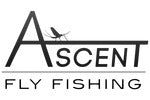
Don’t Skip These Winter Fly Fishing “Hot Spots”

Photo credit: Mark Jessop of Trout Fin Studios
The snow started falling in the High Rockies early this year and with the shift in weather many anglers began packing up their fly rods and dusting off their skis. For many of us though, rain, sleet, snow, or shine, it’s fly fishing season 365 days per year! With the coming of winter however our fly fishing game needs to evolve. Done are the late summer afternoons punctuated by thick brown trout rising to size 8 stoneflies and as the air temperatures start to drop into the 20’s so do the size of our nymph patterns. One of the most notable changes when fly fishing during the winter is how lethargic and unmotivated to feed trout become as water temps drop into the low 40’s to high 30’s.

Photo credit: Mark Jessop of Trout Fin Studios
When it comes to being active during the winter trout aren’t much different from us, they move slower and hunker down in an attempt to conserve energy. While trout do continue to feed throughout the winter as their metabolism slows with falling water temps they become lazy opportunistic feeders, eating primarily aquatic insects that drift within a close proximity of their resting lie in the river. The key to finding active, energetically feeding fish throughout the winter is be able to identify waters that are unseasonably warm. If you are looking for some fly fishing “hot spots” this winter, make sure to keep your eyes open for these 3 steamy opportunities!
Tailwaters Below Bottom Release Dams
The most common and easily accessible hot winter fishery is going to be tailwater located beneath bottom release dams. A bottom release dam is one that feeds the river downstream from water pulled from the bottom of the reservoir as opposed to water that spills over the top. The reason that these fisheries are quite literally hotter than the rest of the river during the winter has everything to do with what’s happening in the reservoirs as they transition into the winter. As the season transitions from fall to winter lakes and reservoirs throughout most of the United States “turn over”, meaning the temperature profile within the lake flips and the warmer surface waters and colder depths of the summer are inverted in the winter and the coldest water is found on the surface just beneath the ice while the warmer water moves to the bottom of the lake. The movement of the warmer water to the bottom of the lake place it right at the outlet of these bottom release dams, in turn feeding the downstream tailwater a steady flow of unseasonably warm water that invigorates both the aquatic insects and trout!
Springs
Springs are defined as a place where water traveling underground finds a fissure in the bedrock or opening to the surface through which it can emerge. One of the unique features of springs is they have a nearly constant temperature year-round. This means that a spring pumping a prime flow of 50-degree water into a river bend in the middle of winter is also providing that same ideal temperature flow during the peak hot days of summer. While not always the case, springs will often enter riverbeds at the base of upstream valleys and can be visually identified by sections of river void of winter ice and confirmed with the quick dip of a fly fishing thermometer in the water. Trout will actively migrate to and aggressively feed around springs in the water and when you find them these hot spots are points to mentally note and return to fish year after year!
Water Treatment Discharges
While they may never be featured in the fly fishing film tour, sections of river downstream of industrial or waste water discharges can offer some excellent winter fishing. Most small mountain towns in the West have waste water treatment facility located next to their local trout stream. As the friendly bacteria in these plants break down nutrients and clean the water the bi-produce of their effort is heat. Where the clean, heated water is then released back into stream trout stack up primed and ready to feed!
The winter days may be short, but if you don’t mind a little ice in your guides, drop your flies in one of these winter fly fishing Hot Spots and tighten your drag because things are about to heat up!

Photo credit: Mark Jessop of Trout Fin Studios
Fly of the Month
Beadhead Flashback Barr’s Emerger PMD
Size 18

Topped with a brass beadhead and a little flash to help it shine through cloudy water, the Beadhead Flashback Barr's Emerger has earned its stripes in the field and on the water, making it one of the most popular and effective mayfly emerger patterns on the market. Tied small in olive or cream, the Beadhead Flashback Barr's Emerger is one of our favorite patterns for matching the emerger life cycle of the BWO, PMD, Sulphur, and Cahill mayfly families.
Dry/Wet: Wet
Fly Category: Generalist Pattern
Family: Mayfly
Species: Blue Winged Olive, Light Cahill, Pale Morning Dun, Pale Evening Dun, Sulphur Mayflies
Life Stage: Nymph, Emerger


